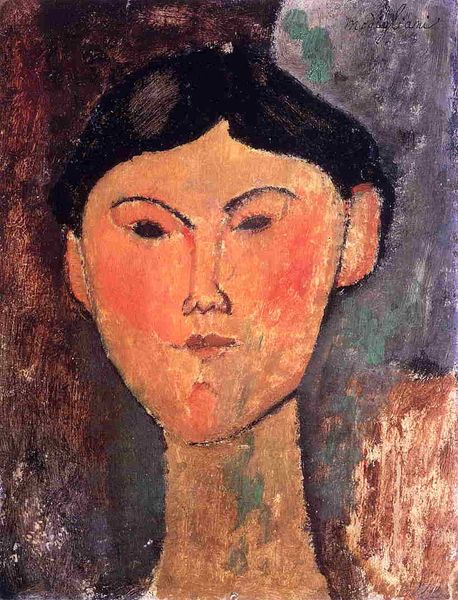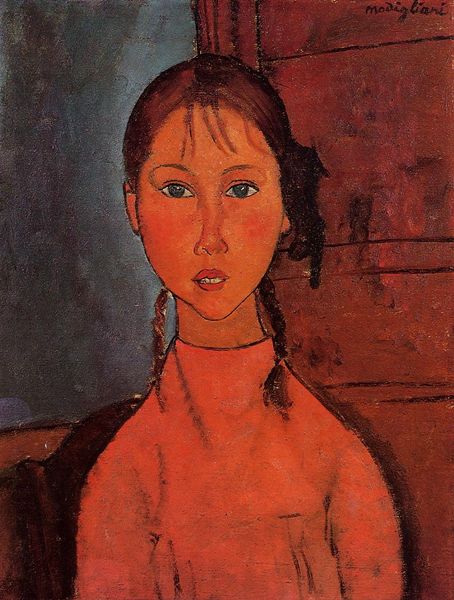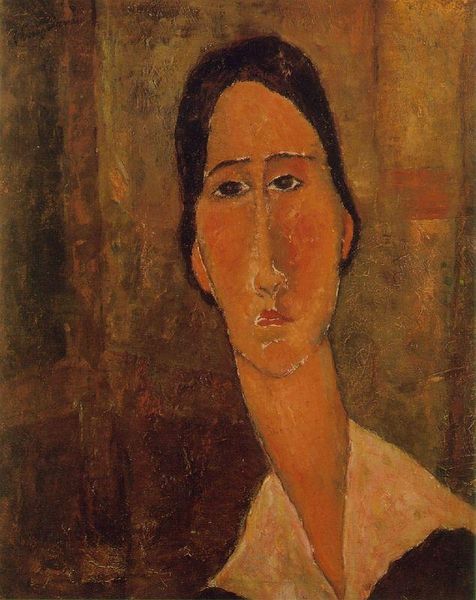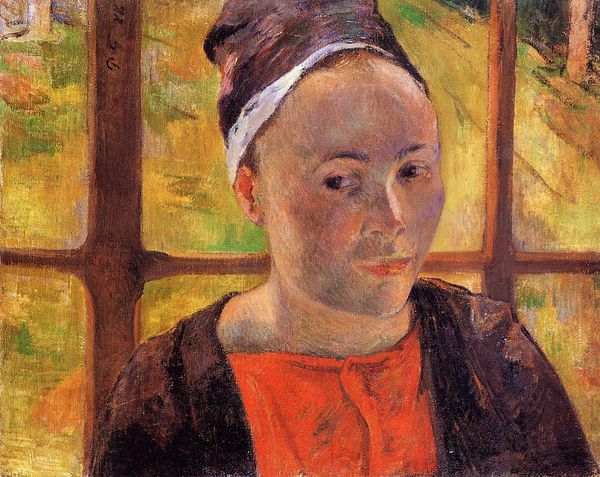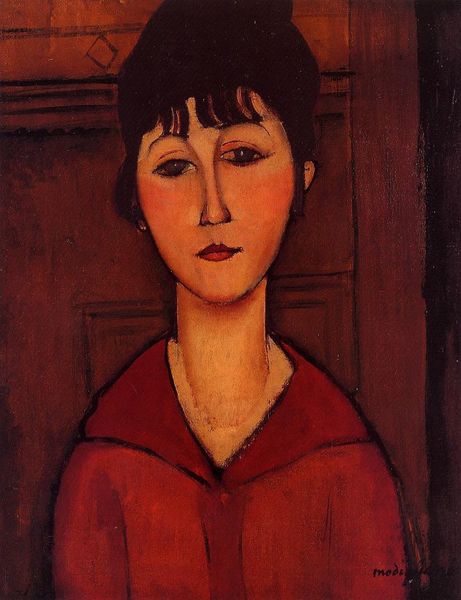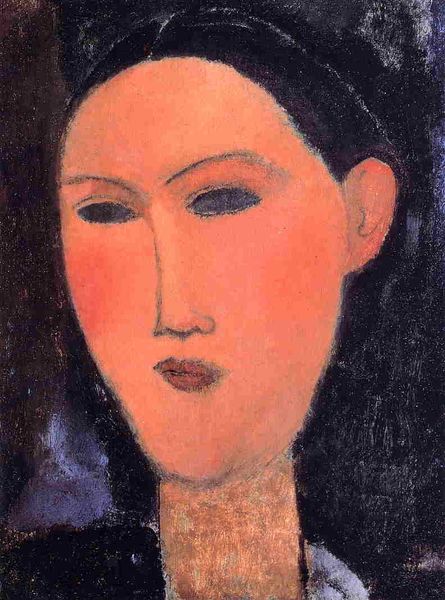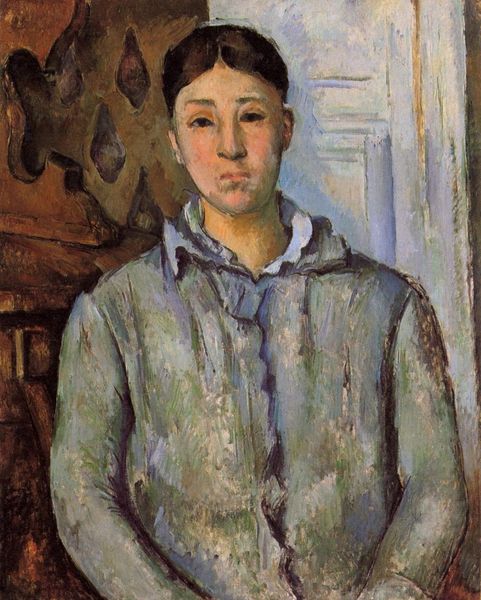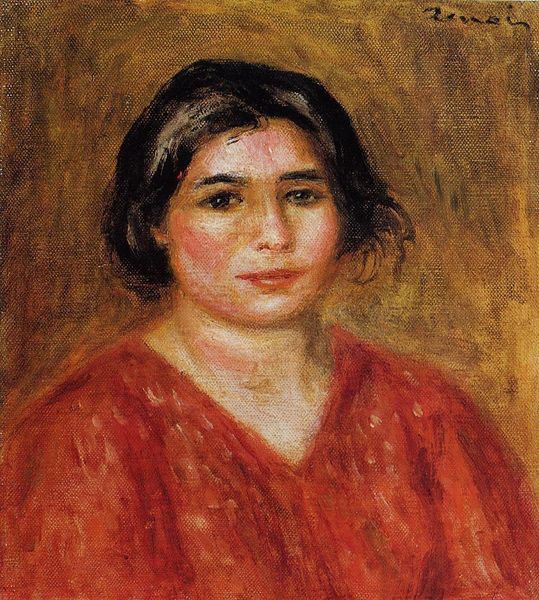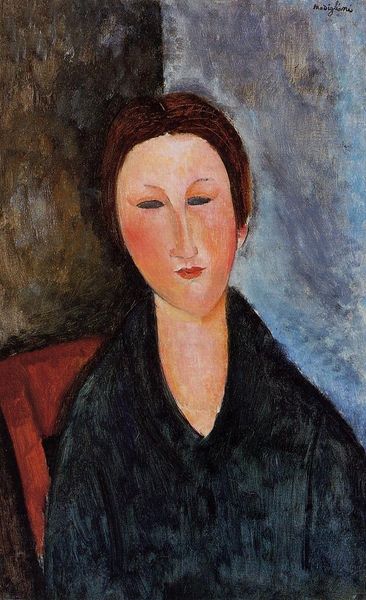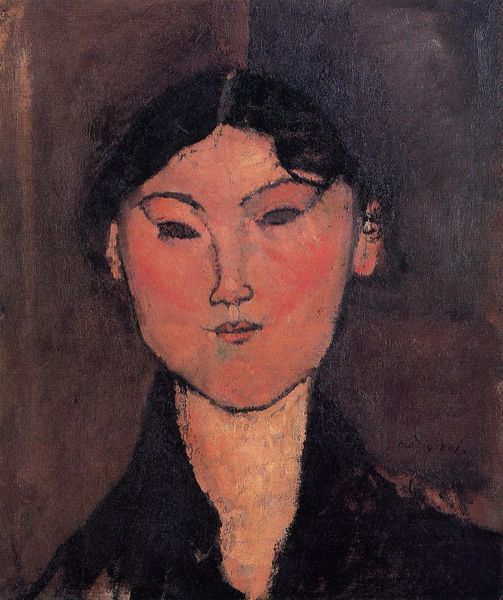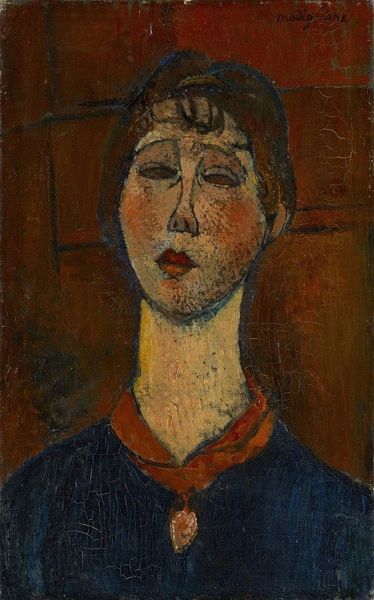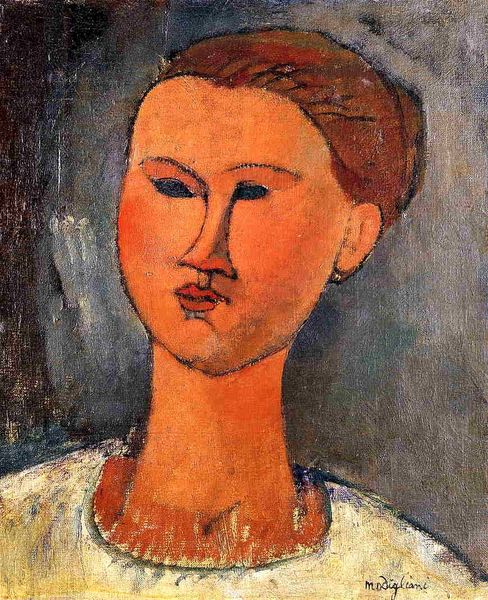
Copyright: David Burliuk,Fair Use
Curator: Let's look at David Burliuk's "Portrait of Marusia" from 1933. It’s an oil painting currently held in a private collection. What are your initial impressions? Editor: The directness of the gaze really strikes me. It feels…uncomfortably honest, maybe? And the colours are so saturated; it's almost harsh. I'm curious, what does the social or historical context tell us about a piece like this? Curator: Well, remember that Burliuk, though born in Ukraine, spent a considerable time in the US, having emigrated in the 20s. What’s fascinating to me is how that transnational identity informs his art. This piece, painted during the Depression era in America, has a boldness that defies the economic hardship of the time. How do you see that boldness reflected in the composition? Editor: Perhaps it’s the unflinching way Marusia is portrayed? No romanticising or softening. It feels almost confrontational, despite being a realist portrait. Curator: Exactly. Burliuk, closely tied to early 20th-century avant-gardes like Futurism and Neo-Primitivism, used portraiture to challenge societal expectations around representation. By using simplified forms and stark coloring, he subverts academic portraiture. Does it strike you as critical in any way? Editor: I suppose, in a subtle way. It’s not overtly political, but there's a sense of defiance in her expression and in Burliuk’s stylistic choices. She seems to push back against established portrait conventions, as if rejecting a beautified version of herself. Curator: And that rejection itself, particularly in a portrait of a woman during that time, is politically charged. Burliuk gives Marusia agency, presenting her as she is, rather than how society expects her to be. We see hints of Expressionism clashing with his earlier Futurism, which he had to abandon. The intensity reflects the social climate. Editor: So, by analyzing the social and political climate, we can see the portrait as more than just a likeness but as a kind of statement, then. Thanks! Curator: Precisely! Analyzing art within these structures often unlocks unexpected depths.
Comments
No comments
Be the first to comment and join the conversation on the ultimate creative platform.
